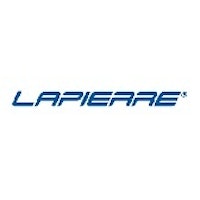That’s not to say the Aircode’s predictability makes it any way boring, though. There’s stiffness aplenty here, with out of the saddle spurts lapped up with keen enthusiasm. The front end carves forwards; direct, stiff, efficient. ‘Addictive’ is an often-overused adjective in this business, but it certainly applies here. The Aircode provides a truly rewarding experience and, despite the oversized tube profiles, it accelerates and responds as well as any ‘traditional’ climbing machine.
On that note, at 6.92kg it’s comes in at a remarkably competitive weight, given the large frame and deep-section wheels, so there’s no bulk holding you back when it comes to your power-to-weight ratio. No, it’s not hill-climbing, UCI-law-breaking lightweight, but that’s not wholly relevant here given the aero focus of the bike. In tandem with the very high stiffness in the frame, it’s plenty light enough to glide up climbs as fast as the rider is able to power it.
Of course, it’s no endurance bike when it comes to rougher, broken tarmac, but it does a great job of deadening the impacts and vibrations to take the edge away. Where some bikes can feel slightly unbalanced by a proportionately soft rear end versus its front, Lapierre has created a whole bike that manages to handle British tarmac admirably for an aero bike. I wouldn’t go looking for potholes, mind, but during testing I showed the Aircode a stretch of Strade Bianche-like gravel road with 25c tyres reduced to around 70psi and it stays admirably true and confident.
Whether the FDJ riders would actually pick it over the new Pulsium bike for Paris-Roubaix is another matter, but it’s not out of the question. Mat Hayman won the Hell of the North on his Scott Foil after all. Indeed, there’s plenty here to present a genuine conundrum for the team’s riders given that there’s just enough space to squeeze 28c rubber in between the direct mount brakes and frame on a dry day. Lapierre says the frame only ‘supports’ 25c rubber though.
The bottom line is, the Aircode is the most comfortable aero frame I’ve tested on longer rides, outstripping both the Oltre XR4 and NeilPryde Nazare. It would be my go-to machine for a hilly century sportive.






















Share